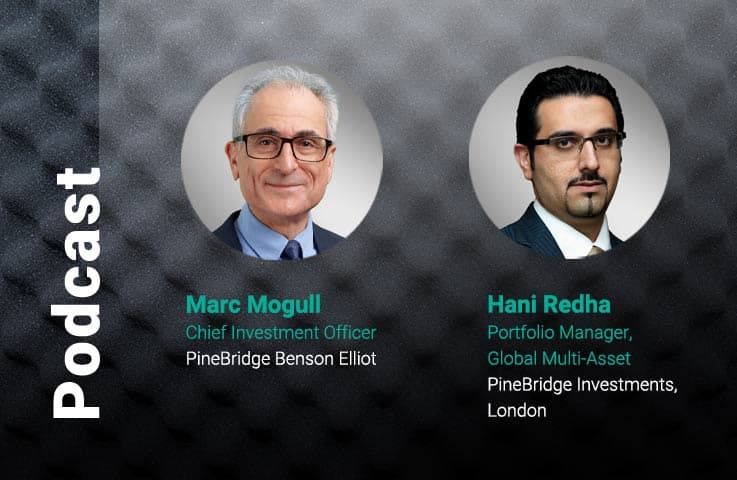The Present of Work: What Success in Europe’s Office Market Looks Like Now

In an April 2021 commentary titled “Building Tomorrow’s Office,” we discussed the future of work, the future of Europe’s office market, and how the forced (and largely successful) remote work arrangements of the pandemic had brought those futures closer to being a reality. Businesses were still in the early stages of return-to-office plans for employees, many of whom were eager to come back at least some of the time, yet it was clear the new more flexible work arrangements were here to stay. We also believed it was clear that to remain relevant, property owners would eventually need to deliver product that met the requirements of this new more flexible, more destination-oriented workforce and workplace. We laid out what some of those requirements would likely be, from health-related features to customizable designs to green building bona fides. But, as the headlines indicated, it was still a bit unclear how q
uickly such trends would become the norm.
Two years later, that question has been answered: The future, at least in Europe, has arrived. As hybrid work patterns have become more entrenched, skyrocketing energy prices from the war in Ukraine have accelerated sustainability goals, and higher inflation and interest rates have raised the hurdle rate for what constitutes a successful property, the very definition of prime real estate has changed. The European office market, in turn, has effectively cleaved into two: one market where demand pressures run up against limited supply, vacancies are low, rents are rising, and next-five-year fundamentals look strong; and the other, where the situation is quite the opposite and the best hope for many properties is a sufficient recovery value and redevelopment to meet the new greener, more flexible definition of prime.
Prime Time: Bifurcation of European Office Demand
European Take-Up by Grade (%of Total)

Sources: Savills, Morgan Stanley, 3 April 2023; Europe is average of France, Ireland, Italy, Netherlands and UK.
As unsettling as it can be for owners and investors who find themselves on the rump end of Europe’s new, bifurcated office market, it could be worse – they could be in the US. The US office market has long been seen as a leader in property cycles, but in the current post-pandemic re-rating and re-constitution cycle it has lagged well behind Europe. Whereas in Europe the average vacancy rate across building classes seems to be settling out at about 7% (two percentage points above its pre-pandemic levels), in the US it has soared past 20%, with some especially hard-hit markets like San Francisco eclipsing 25%. A stunning 7% of all US office buildings now sit more than half empty.1 One difference between the two markets is longer and more expensive commutes in the US, which have left the rate of office re-entry at about 50%, compared to 70% on average across Europe.2 But there are also key differences on the supply side, namely related to the vast inventory of office space erected in the US over the past decade-and-a-half as a result of cheap financing.
It Could Be Worse – and in the US, It Is
Office vacancy 2006-2023

Source: JLL, “European and U.S. office markets – a tale of two continents” April 2023
For a variety of reasons, the amount of space constructed in Europe during the free-money years was never as large as it was in the US. Building codes were tighter, and available land, especially in or near city centres, was always much scarcer. As a result, a higher percentage of the properties either in or moving toward obsolescence are more likely to get rebuilt. By comparison, the size of the “have-not” portion of the US office market today is such that a larger percentage of it may never get redeveloped. A recent Cushman & Wakefield report3 projects that the US office market will end this decade with 1.5 billion square feet of vacant space, 330 million of which – roughly equivalent to three-quarters of all the office space in Manhattan – will by then be obsolete, with little foreseeable path back toward relevancy and reuse.
The office space as transformer set
So, back to Europe: With two years of additional clarity, what are the trends driving the leading edge of the newly reconstituted “future is now” European office market? At PineBridge Benson Elliot, we see them breaking down into four major categories.
The new definition of prime – for tenants and investors - is all about the ability to adapt to change. Many corporate tenants now actively seek less square footage and more flexibly designed space, to create a place that is as much a destination for employees and visitors as it is a workspace. This new space is, of course, of a higher specification and more expensive to build and therefore lease than the space it replaces, but the current trend is for tenants to use their downsizing of the total area required to offset the higher rent.
Given the uncertainty in the economy, many tenants are asking for shorter-term or more flexible leasing arrangements so they can adjust their space requirements as needed depending on business conditions without paying cancellation fees or penalties. Many, too, still don’t know (or have stopped trying to figure out) how hybrid arrangements will continue to evolve, instead opting to treat their tangible space more in the fashion of their virtual office and other software and equipment licenses – i.e., programmed to be updated over time. For property owners, this creates an entirely different dynamic. Those capable of benefitting from the pricing power such arrangements can provide, while minimizing capex burn, should find the most success: Strong locational advantages, as always, will be one key to making the new dynamic work, as will built-in design flexibility, creating spaces with modular finishings that can be easily swapped out or rearranged.
Go green or go home
To a much greater degree than in the US, demand in Europe reflects an increasing corporate commitment to sustainability, especially carbon reduction. Europe’s objective to achieve a net-zero carbon position by 2050 means that businesses are looking at using the most energy-efficient models at every touchpoint. It only follows that with 40% of annual global carbon dioxide emissions coming from the operation of buildings and their construction, companies will choose office premises with higher “green” credentials.
At PineBridge Benson Elliot, we have been building high-performing sustainable buildings for over a decade. All our new office buildings are now designed to sustainability-accredited (e.g., BREEAM Outstanding or LEED Platinum) credentials as we move closer to bringing our office portfolio to net zero on a regulated operational basis. Electricity across Europe, including the UK, is increasingly being sourced sustainably.4 So, by developing or retrofitting projects to incorporate heating and air conditioning systems that use air-source and ground-source heat pumps linked to a fully renewable electrical source, we are already close to achieving our operational net-zero carbon goal.
At a total project lifecycle level, we are also taking steps to reduce the carbon in the building materials we use: for example, limiting the use of cement (the production of which alone is responsible for 8% of global emissions5) to the heaviest-stress parts of the structure, such as the foundation; and making greater use of support materials such as cross-laminated timber, whose environmental impact is significantly reduced by the large amount of embodied carbon held within the wood.
Investors may be surprised to learn that in the entire city of London, only six buildings are currently credentialed BREEAM Outstanding. Across such top-tier designations, we’re seeing rents starting to rise significantly. At the same time, the countdown toward other properties’ obsolescence is speeding up. Some city-center buildings that are just five or six years old no longer fit the green/sustainable or Energy Performance Certificate (EPC) ratings requirements of top tenants (not to mention the regulators). The good news is that these buildings are likely to be redeveloped, but not without early capital expenditures to bring them up to the standards that are increasingly being demanded.
Healthy inside and out
At the time of our prior commentary in 2021, the pandemic was still top of mind for most people, and much of the office market’s attention was on designing spaces that would be as “virus-proof” as possible. Landlords busily upgraded air filtration systems, installed touchless controls for doors and elevators, and created open floor plans with visible stairs to encourage their usage to minimize crowding in corridors, elevators, and elevator banks.
Two years later, as Covid has receded more and more into the background, such upgrades and innovations have nevertheless worked their way into the fabric of office design. Healthier, less crowded, more naturally lit spaces with better air circulation have become almost table stakes for what is considered a prime property design. In the process, employers have also come to an important realization: These improvements can make for happier, more productive workers, help attract and retain talent, and cut down on resistance and dissatisfaction over the number of days people are expected to be in the office.
Even before Covid, PineBridge Benson Elliot had been developing what are known as “biophilic” offices that incorporate state-of-the-art well-building concepts. First popularized by the American biologist Edward O. Wilson, biophilia is based on the principle that humans are biologically wired to seek a connection to nature; in architecture, this has given rise to designs that aspire to a higher level of physical and spiritual well-being by blurring the boundaries between built and natural space through the extensive use of natural light, thoughtful landscaping, indoor greenery, and other organic elements. One of our biophilic schemes now at the groundworks stage in Milan will have 20,000 square meters of terraces and other external useable space – nearly three times the size of the average European football pitch.
The new business circle
Finally, we and other forward-looking property investors and developers are looking more closely at the circular economy. In some jurisdictions, increased planning and permitting requirements to retain the carbon embedded within a structure or building material are making teardowns more complicated and expensive. In addition to being more attuned to today’s tenant needs, flexible buildings and spaces that can be more easily adapted help navigate these new redevelopment requirements and are generally better for the environment by cutting down on the need for demolition and the amount of material that ultimately winds up in landfills.
In many European countries today, nearly half of all waste still comes from construction and demolition.6 Some countries like the Netherlands have made the recovery of construction waste a top national priority. According to one study, a remarkable 97% of Dutch building waste was classified as “recovered” in 2018.7 Yet even in the Netherlands, most recovered waste is downcycled – crushed into asphalt or incinerated to produce energy – with just a small percentage reused in its original form, meaning that trees are still being cut and cement and steel being fabricated to put up new buildings.
Private companies in the Netherlands, Japan, and elsewhere have spearheaded new ways of taking high-rises down from the inside to repurpose more of the material in other construction and retain the embodied carbon. We are among the firms trying to make their job easier – using materials designed from the start to be taken apart more easily, almost in the style of Lego blocks, so they can be used again. It’s a humble recognition that in today’s fast-evolving workspaces, even the most adaptable and flexible designs may reach a point, sooner than in past eras, where it could just be easier and more economical to start over.
With millions of square meters set to hit obsolescence in Europe in coming years, such circular thinking will become even more important – and perhaps the best hope for meeting carbon retention requirements, limiting redevelopment costs, and preventing the cycle of demolition and waste from continuing into the next generation of office space design.
Footnotes
1 Source: fDi Intelligence, “Out of office: US vacancy rates hit record high,” April 2023 https://www.fdiintelligence.com/content/data-trends/out-of-office-us-vacancy-rates-hit-record-high-82348
2 Source: JLL, “European and U.S. office markets – a tale of two continents,” April 2023 https://www.jll.co.uk/en/trends-and-insights/research/talking-points/european-and-us-office-markets-a-tale-of-two-continents
3 Source: Cushman & Wakefield Obsolescence Equals Opportunity Report, 2022
4 Source: The New York Times, October 2022 (https://www.nytimes.com/2022/10/06/headway/office-tower-carbon-emissions-amsterdam.html)
5 Source: Department for Business, Energy & Industry Strategy, 22 December 2020 (https://www.gov.uk/government/collections/energy-trends)
6 Source: Interreg Europe, February 2023. Collection and recycling of construction and demolition waste: Key learnings.
7 Source: The New York Times, October 2022. https://www.nytimes.com/2022/10/06/headway/office-tower-carbon-emissions-amsterdam.html
Disclosure
This material was prepared by PineBridge Benson Elliot for educational purposes only. The information contained herein may not be replicated, reproduced, distributed, or provided to any other party without the prior written consent of PineBridge Investments. Opinions expressed herein are solely those of investment manager and may differ from the views or opinions expressed by other areas of PineBridge Investments. This material is for informational purposes only and does not constitute: (i) research or a product of any research department, (ii) an offer to sell, a solicitation of an offer to buy, or a recommendation for any investment product or strategy, or (iii) any investment, legal or tax advice. Any opinions, projects, forecasts and forward-looking statements contained herein are speculative in nature, valid only as of the date hereof and subject to change. All investment strategies involve risks, there can be no assurance that the investment objectives of any particular strategy will be met in any particular circumstances. All information has been obtained from sources believed to be reliable, but its accuracy is not guaranteed, and no independent verification of the information has been obtained. See Global Disclosure Statement for more information.



